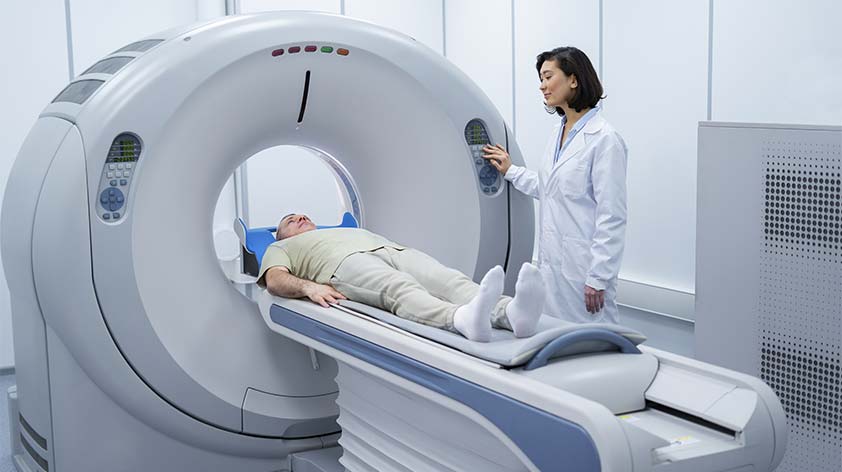
One of the most important things to remember on this topic is that Magnetic Resonance Imaging (MRI) scans are routinely used as a crucial diagnostic tool in modern medicine.
With the help of a powerful combination of magnets, radio waves, and a computer to analyze the results, MRI machines can create detailed images of the inside of your body. This information could be crucial in helping doctors diagnose and monitor various conditions.
If you search MRI Salt Lake City, for instance, you will quickly discover that this is a procedure that is very common. Despite this, many of us still have certain concerns or questions about what to expect when this diagnostic procedure is suggested.
Whether you’re scheduled for an MRI or simply curious about how it works, this guide will walk you through everything you need to know about the procedure.
What is an MRI Scan?
A simple enough question, but although most of us have heard of an MRI scan, a much smaller percentage will be able to explain what it actually involves.
In simple terms, it is a non-invasive imaging technique that provides high-resolution images of your organs, tissues, and bones, without using radiation. It is a scan that is commonly used to examine specific parts of your body where signs of disease or abnormalities can be detected with the information obtained.These include your brain, spinal cord, joints, heart, and abdominal organs. As well as using the scan to detect abnormalities, it is a method that can highlight issues such as tumors, inflammation, or nerve damage. Being able to pinpoint these serious issues that require further medical attention is what makes an MRI scan an essential tool in medical diagnostics.
How Does an MRI Work?
It is essential to appreciate that an MRI scan is not like X-rays or CT scans, which use ionizing radiation. Instead, MRI technology relies on magnetic fields and radiofrequency waves.
What happens is that when you are lying inside the MRI machine, the powerful magnet temporarily aligns hydrogen atoms in your body. Radio waves then disturb this alignment, and as the atoms return to their original state, they emit signals. The MRI machine is designed to capture these signals and convert them into detailed images.
Why Are MRI Scans Performed?
As you might expect, doctors might order an MRI scan for a variety of different reasons. Some of these reasons include detecting brain injuries, spinal cord disorders, joint problems, heart conditions, and abdominal diseases, and other serious issues.
This type of scan can be particularly useful for identifying soft tissue abnormalities that may not be visible with other imaging methods. In addition, MRIs are often used to monitor treatment progress in patients undergoing therapy for conditions such as cancer or multiple sclerosis.
Preparing for an MRI Scan
The good news is that preparing for an MRI is relatively straightforward but there are some important things to keep in mind. Before the scan, you may be asked to remove metal objects, including jewelry, watches, and belts, as these can interfere with the magnetic field.
If you have medical implants, such as pacemakers or cochlear implants, it is really important that you inform your doctor beforehand, as some devices are not MRI-compatible.
In certain cases, you may need to fast for a few hours before the scan, especially if a contrast dye is being used. The contrast agent, typically gadolinium-based, helps enhance image clarity by highlighting specific tissues. While generally safe, some patients can experience mild allergic reactions or temporary side effects, such as nausea or headaches. These can be handled and managed by liaising with your medical provider.
What Happens During the MRI Scan?
It is perfectly understandable that you might feel a bit apprehensive about your first time in an MRI scanner. However, it will help allay your fears when you have advanced knowledge of how the procedure works.
You will be asked to lie on a motorized table that then slides into the MRI machine when you are in position. It is shaped like a large tube. There will be a technician operating the machine from an adjacent room and they will communicate with you via an intercom system.
A good thing to know is that while the scan itself is painless, the machine produces loud knocking or thumping sounds. This is why you will be provided with earplugs or headphones.
Depending on the area of your body that is being examined, an MRI scan can take anywhere from 20 minutes to over an hour. You will be asked to remain as still as possible throughout this time in order to ensure clear images are achieved.
Perhaps not surprisingly, some people may experience claustrophobia inside the machine. If you think that this might be the case for you, you could be offered an open MRI or, alternatively, a mild sedative might be recommended.
Are There Any Risks or Side Effects?
MRI scans are considered very safe since they do not use radiation. However, people with metal implants or certain tattoos containing metallic ink should check with their doctor before undergoing the procedure. Additionally, while the contrast dye used in some MRIs is generally safe, individuals with kidney problems should discuss potential risks with their physician.
What Happens After the MRI?
Once your scan has been completed, you can usually can resume your normal activities straight away, unless sedation was used. Your radiologist will analyze the images and send a report to the referring doctor, who will then discuss the results with you. Depending on the findings, further tests or treatment may be recommended, or you may be invited for another precautionary scan at a later date, to monitor any changes in your health profile.
As you can see from the overview provided, MRI scans should be seen as a vital part of modern medicine. They are brilliant for offering detailed insights into your body without resorting to invasive procedures or radiation exposure.
Having an understanding of the process can help alleviate any anxiety you might have and ensure a smooth and virtually stress-free experience. If you have concerns about an upcoming MRI, it is always a good idea to consult your doctor for more information and guidance.









